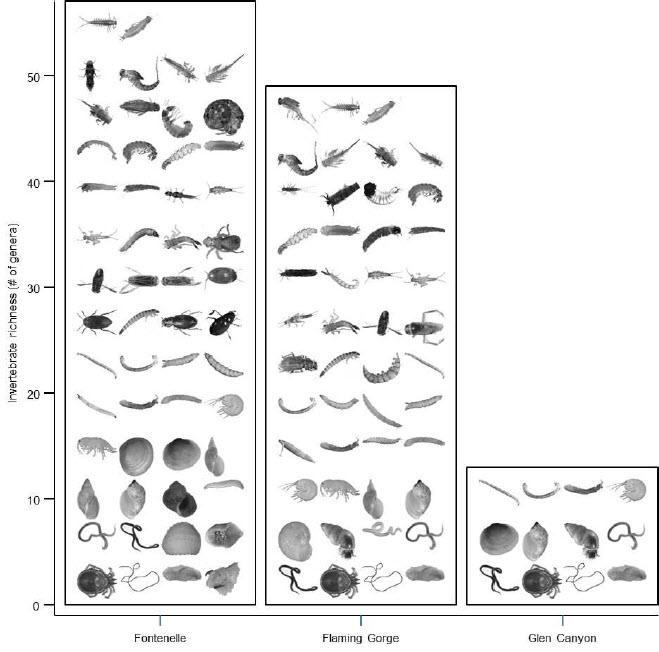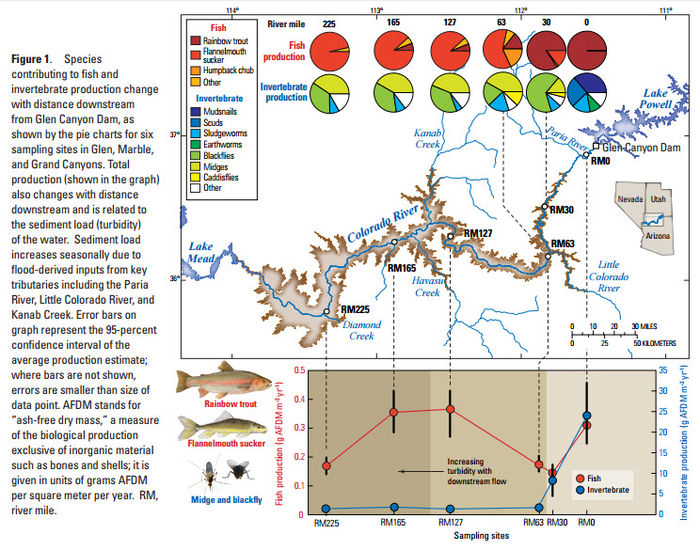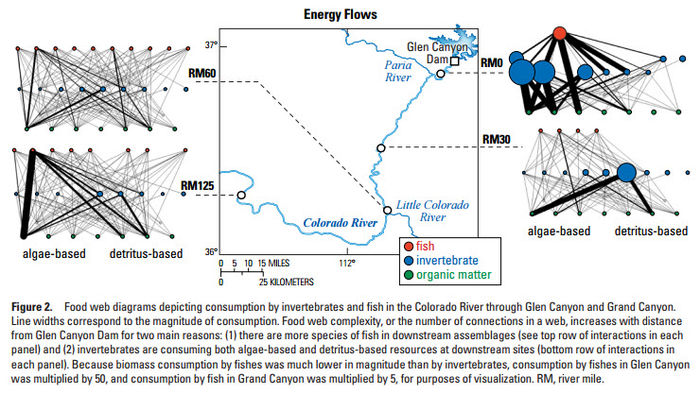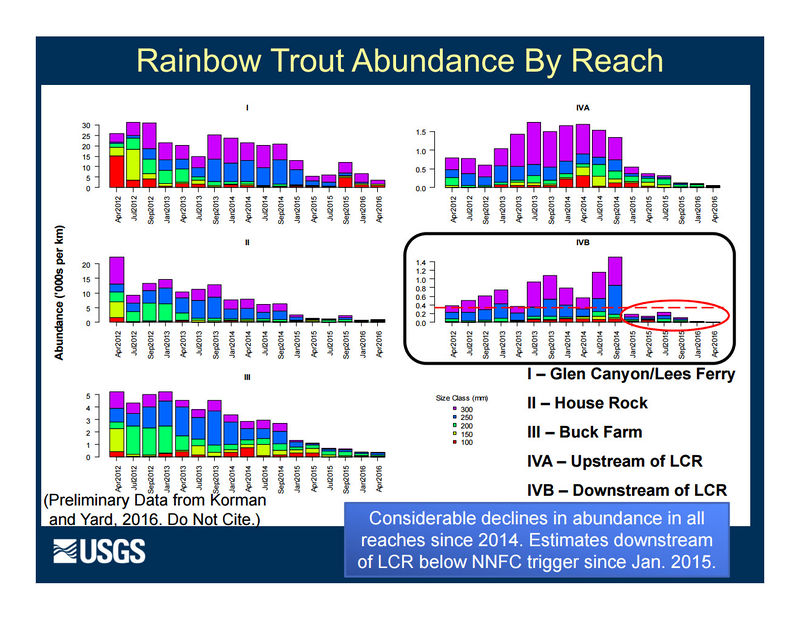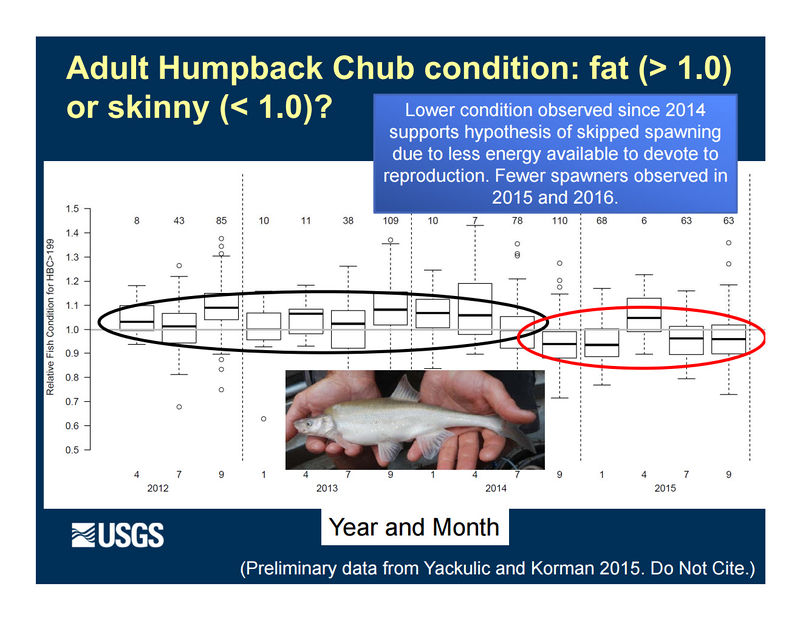|
Kennedy's 2016 Bioscience paper presents a conceptual model describing how hydropower flows could be limiting aquatic insect diversity and production by limiting the reproductive success of insects accustom to laying their eggs along the shoreline. It provides supporting data from an egg desiccation study done below Flaming Gorge Dam, light trap data collected in the Grand Canyon, and a comparison of fluctuation intensity and EPT diversity in several western US hydropower tailwaters. The paper concludes that egg desiccation from fluctuating flows is likely a leading factor in limiting aquatic insect diversity and production in tailwaters below hydropower facilities. The paper also proposes a bugflow experiment to be tested at Glen Canyon Dam as a possible mitigation for fluctuating flows made for hydropower production.
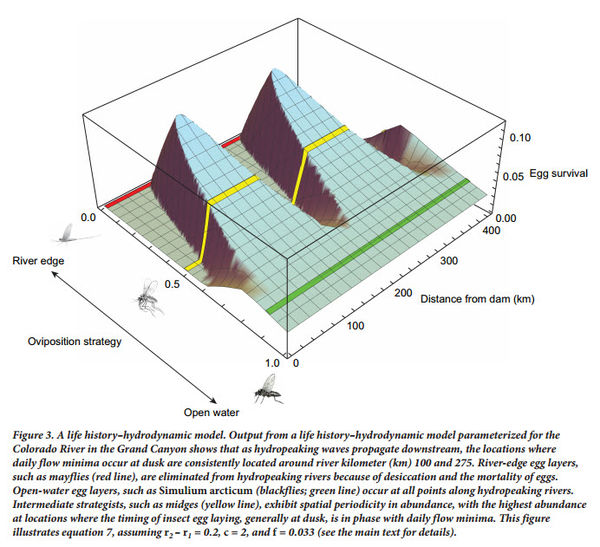
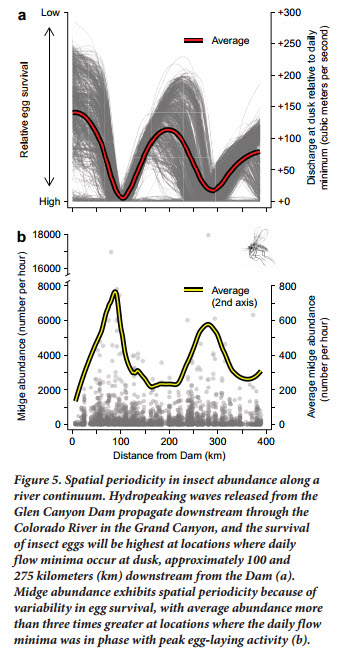
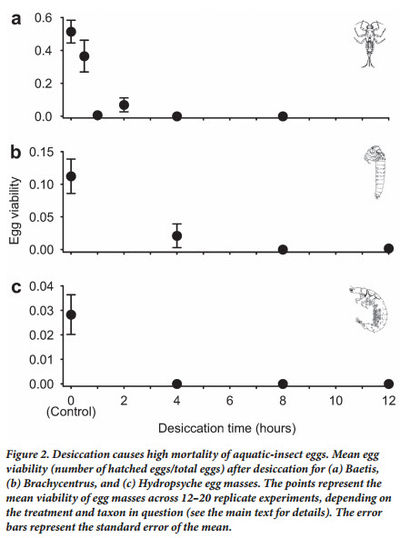
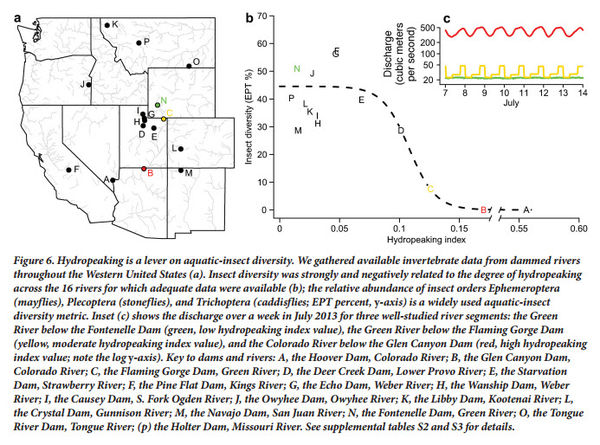
Recent food web studies (2006-2009) conducted in collaboration with University of Wyoming, Montana State University, Idaho State University, and the Cary Institute for Ecosystem Studies revealed that fish populations in the Colorado River downstream from Glen Canyon Dam appear to be limited by the availability of high-quality invertebrate prey. Midge and blackfly production is low and nonnative rainbow trout in Glen Canyon and native fishes in Grand Canyon consume virtually all of the midge and blackfly biomass that is produced annually. In Glen Canyon, the invertebrate assemblage is dominated by nonnative New Zealand mudsnails, the food web has a simple structure, and transfers of energy from the base of the web (algae) to the top of the web (rainbow trout) are inefficient. The food webs in Grand Canyon are more complex relative to Glen Canyon, because, on average, each species in the web is involved in more interactions and feeding connections. Based on theory and on studies from other ecosystems, the structure and organization of Grand Canyon food webs should make them more stable and less susceptible to large changes following perturbations of the flow regime relative to food webs in Glen Canyon. In support of this hypothesis, Grand Canyon food webs were much less affected by a 2008 controlled flood relative to the food web in Glen Canyon.
During periods of high fish abundance, food limitation can lead to extreme competition between rainbow trout and humpback chub for limited food resources resulting in large swings in in the trout population and skip spawning in the humpback chub population. These effects can be amplified by increasing water temperature if food production or availability don't correspondingly increase because warmer water increases fish metabolism requiring them to eat more food in order to maintain body condition.
|

